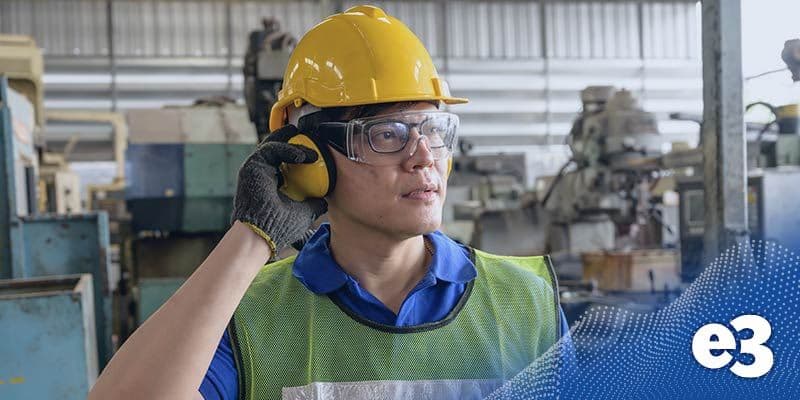Implementing Hearing Conservation in the Workplace

Noise-induced hearing loss (NIHL) is a prevalent workplace hazard, affecting millions of workers worldwide. However, with proper awareness and proactive measures, it’s largely preventable.
This blog provides important information on how to create an effective hearing conservation program.
Understanding Hearing Conservation
Hearing conservation is a systematic approach aimed at preventing occupational hearing loss. It involves identifying workplace noise hazards, implementing measures to control noise exposure, providing appropriate hearing protection devices (HPDs), and conducting regular monitoring to ensure compliance and effectiveness.
In the US, OSHA establishes legal noise exposure limits for workplaces, calculated as an 8-hour time-weighted average (TWA). The permissible exposure limit (PEL) for noise is 85 dBA for all workers over an 8-hour workday.
Workplaces Requiring an Occupational Hearing Conservation Program
Any workplace with decibel noise levels exceeding PELs established by occupational health and safety regulations needs a hearing conservation program. Manufacturing, construction, mining, transportation, agriculture, and entertainment are susceptible to hazardous noise.

Designing a Hearing Loss Prevention Program
Here are the basic steps to get your hearing conservation program started.
-
Conduct a comprehensive noise assessment to identify areas of concern. Utilize sound level meters to measure noise levels across different workspaces and tasks.
-
Implement engineering controls to reduce noise levels at the source. These controls may involve machinery modifications, acoustic enclosures like audiometric sound booths, or soundproofing materials.
-
Develop administrative controls to limit exposure to hazardous noise. This includes job rotation, scheduling noisy tasks for quieter periods, and establishing designated quiet zones.
-
Use earmuffs or earplugs to protect employees from loud noise. Ensure proper fitting and educate employees on the importance of consistent use. Regular fit testing to verify the actual attenuation level of your employees’ hearing protection devices is also critical.
-
Train regularly to learn about the dangers of loud noise and how to prevent hearing loss. Train employees on proper HPD use, maintenance, and the signs of hearing loss.
-
Implement regular audiometric testing to monitor employees’ hearing health and detect early signs of hearing loss. Maintain detailed records of audiometric results for each employee.
-
Continuously evaluate the effectiveness of the hearing conservation program through noise monitoring, compliance audits, and employee feedback. Make necessary adjustments to improve program efficacy.
e3 Occupational Health Solutions Program Assessment & Creation
e3 Occupational Health Solutions offers comprehensive assessments and creation of Occupational Health Programs tailored to your needs. We specialize in evaluating requirements for hearing conservation programs, vision conservation programs, data management, and OSHA compliance through thorough environmental assessments.
Wondering what our assessment covers? In the initial program evaluation, we provide an array of services:
- Initial Consultation: We meet with your occupational health team to discuss methods, requirements, and goals.
- Environment Assessment: We thoroughly review your workspaces for occupational health compliance.
- Factor Surveys: We conduct scans of the work area to establish baselines for vision, noise, and safety.
After reviewing your initial assessment, we’ll outline your customized program, covering regulations, testing schedules, recommended equipment, and more. Plus, we’ll equip you with resources for managing training, testing, and records to develop a tailored occupational health program.
Hearing conservation is essential to workplace safety, particularly in industries with high noise exposure. Businesses can protect their employees from hearing loss by having a hearing conservation program in place. This also helps promote a culture of safety and wellness.
To learn more about our occupational health program creation and management
Click Here
Other Good Reads: What’s the Difference? NIOSH vs OSHA
